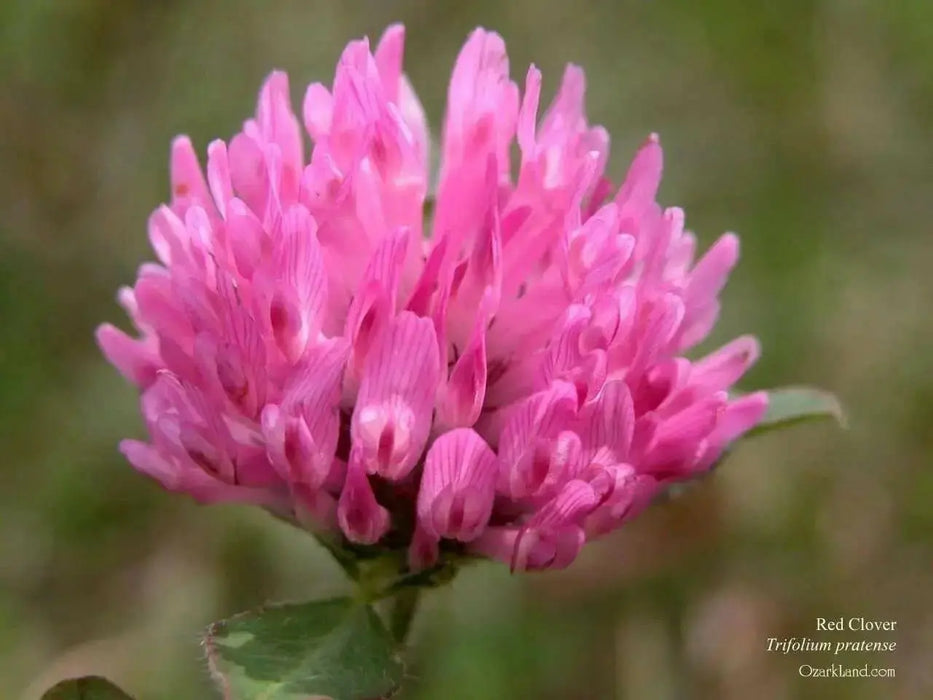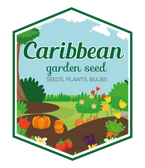
Red Clover Seeds,Cover Crop - ,Improve Garden Soil, GroundCover
FAST & FREE SHIPPING
Over 90% of our orders are processed and ship out by next business day.
We are currently processing and shipping most orders within 1-3 business days. (backorders not included) Due to high demand during the peak months of January to May, orders may require additional time for packaging /shipment.
Free shipping for orders over $54.95. Excludes live plants, fresh products And Stackable Black Plastic Nursery Crate
Shipping and handling charges will cover outbound freight and packaging materials. Fees are applicable to all orders, based on total order value pre-tax. Expedited services can be selected at Checkout with extra fees.
- Free shipping to lower 48 states on orders $54.95+
- (Most Items), excluding live plants, plant bulbs, and black plastic nursery crate.
- Safe Seed Pledge
- Satisfaction Guaranteed
- Select your desired size and/or color from the available options.
Red Clover Organic Cover Crop Seed - ,Improve Your Garden Soil,Cover-The best clover for poor soils. Inoculated . Inoculated
Avg. 247,660 seeds/lb.
The best clover for poor soils.
Red Clover (Trifolium Pratense) - Red clover seeds are an important forage legume grown widely in the temperate regions throughout the U.S. extending from the Northeast through the Midwest to eastern North and South Dakota, Nebraska, and Kansas and into the upper South. Red clover is becoming increasingly important in the Deep South where it is used as a winter annual. It is also grown in many areas from bulk clover seeds in the Pacific Northwest and other regions of the U.S. It is considered to be a short-lived perennial clover, meaning it typically lasts 3 - 5 years; however, it will often persist beyond this due to self-seeding.
Inoculated Seed - We now offer red clover seed that has been coated with an inoculant for better establishment. NITRO-COAT rhizobium strains are specifically chosen for each seed type. A key to any successful establishment and early seed development is moisture. NITRO-COAT is naturally water absorbent and helps attract soil moisture to the seed, getting your stand established quickly. This coating process which Outsidepride utilizes, assures that only the top-performing and crop-specific rhizobia will be applied to ensure your clovers reach maximum nodulation, stand establishment, and yield potential. The weight of the clover seeds will contain approximately 34% coating material that contains the inoculant and water holding material for better establishment and viability of the seed. There is no difference in the seeding rates between the coated and raw seed due to the increased germination and viability of the bulk clover seeds that are coated and inoculated.
Red clover is adapted to a wide range of climatic conditions, soil types, fertility levels, use patterns and management. It is easy to establish, red clover seeds establish vigorously and is a very good clover to fixate nitrogen out of the atmosphere and in to the soil. Red clover is relatively easy to remain free of disease and pests. For this reason, red clover has many uses and is often used as part of a crop rotation program. Although red clover seed is tolerant of a wide range of soil and climatic conditions, it prefers rather mild conditions rather than hot climates and prefers locations where rainfall or irrigation are consistent throughout the year.
- Red clover is most often grown in association with cool season grasses but can be grown alone or with certain warm season perennial grasses. It can be used for pasture, hay, or silage, and is an excellent soil improvement crop. When grown where it is well-adapted, the yield of red clover seed is usually higher than that of any other clover. In addition, it has a longer growing season than any other clover grown in the United States.
- Clover Specifications
- Latin Name: Trifolium Pratense
- Season: Perennial
- USDA Zones: 3 - 9
- Environment: Full sun
- Height: 24 inches
- Bloom Color: Red
Improve your garden soil with fall cover crops!
At the end of the growing season you may be ready to rest, but your garden is not. One final effort can make a big difference: cover cropping. Even small gardens will benefit from the use of cover crops, or "green manures". Tilling, weeding, harvesting and foot traffic of most home gardens tends to destroy soil structure. Planting cover crops is an easy way torevitalize the soil, and help soil tilth and subsequent plant growth. Cover crops are planted in vacant space and worked into the soil after they grow instead of being eaten. They provide a number of advantages to the otherwise wasteful use of space during your garden's off-season.
A perennial clover to control erosion and protect soil!
Clover Seeds
A living mulch of permanent cover. Spreads by stolons. Grow low so takes close mowing and grazing. Benefits bees and insects. Fixes nitrogen.
Fertility
The most important investment in a fertility program is a soil test, which will indicate soil needs with regard to pH, phosphorus, and potassium. White dutch clover yields better and stands last longer when grown on soils with a medium level of phosphorus and potassium. A pH of 6.0 - 6.5 is usually recommended for excellent yields and stand persistence. In some states, minor elements may also be recommended.
Fertilization with nitrogen is not recommended when seeding white clover seeds into grass. Nitrogen will stimulate the grass, thus providing more competition for the white clover seedlings during establishment. This becomes even more of a problem when seeding white clover into established grass pastures. Increased grass competition from added nitrogen can result in death of white clover seedlings. In most states, application of nitrogen to established clover/grass mixtures is not recommended if white clover occupies 20% or more of the ground cover.
Seeding Rate
Seeding rates vary with geographic location, seeding method, and seeding mixture. In general, rates 1/4 - 1/2 lb per 1000 square feet or 8 to 10 lbs per acre are recommended.
Seeding Depth
The ideal seeding depth for clover seeds is approximately 1/4-inch maximum, but under favorable weather and soil conditions, clover seed present on the soil surface may germinate and become established. Good seed-soil contact is important to ensure rapid germination and emergence.
Seeding Time
In the Southern USA, white clover is seeded in late winter or early spring and in late summer. In the Northern USA, most white dutch clover is seeded in early spring or late summer.
HOW TO GROW GUIDE
LET OUR CUSTOMER SPEAK FOR US

![[Seeds] - Caribbeangardenseed](http://caribbeangardenseed.com/cdn/shop/files/gift-card-gift-card-1_1024x1024_dfa857db-9150-4315-a362-7f0bb3fb9c47_60x28.png?v=1722895789)







